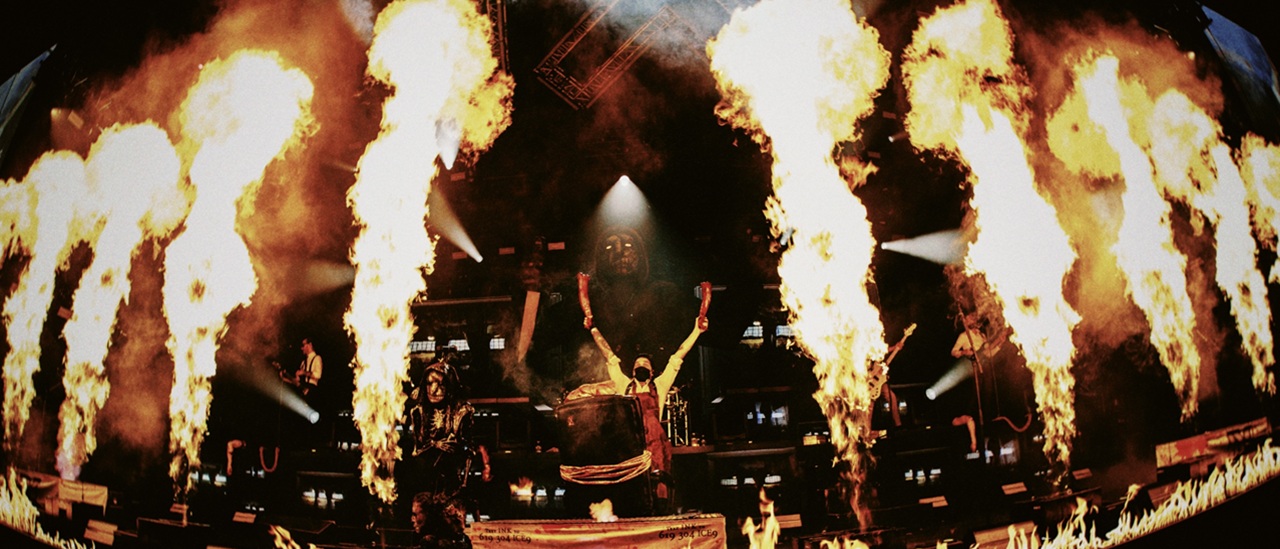A beginner's guide to metalcore in five essential albums
From its roots in the hardcore scene to the 2000s explosion and beyond, this is metalcore's journey in five simple steps

Defended by purists, maligned by elitists and misunderstood by many others, metalcore remains one of heavy music's most hotly debated subgenres, almost three decades after it first reared its head. The merging of scything, metallic riffs with brutal hardcore breakdowns seemed like a match made in heaven as it began to infiltrate the 90s punk scene. Then, as the New Millennium dawned, metalcore seemed to split in two, heading down two clear but entirely separate paths: one taking on a more streamlined and polished template as the masses began to take note, the other stretching the formula into ever more complex and aggressive realms.
In 2023, metalcore is arguably bigger than ever, its 21st century graduates headlining arenas and festivals around the world, and its 90s OGs being recognised for the true innovators they were. With all that in mind, here are the five metalcore albums that you should wrap your ears around if you're looking to better understand the journey this particular style of music has undertaken.

Earth Crisis - Firestorm (1993)
While not technically an album (alright, it's nowhere near an album: it's a four-song EP), Earth Crisis' second release crystallised the coming together of thick, metallic riffs and brutalising breakdowns that hardcore had been flirting with for some time. The likes of Agnostic Front and Integrity had toyed with the trick beforehand, while everyone from Cave In, Snapcase and Shai Hulud to Botch, Hatebreed and Poison The Well would add new strokes to the sound as the 90s progressed, but Firestorm is where metalcore firmly established itself as a subgenre with serious legs.
Converge - Jane Doe (2001)
Just before metalcore blew up and became the go-to sound for a whole generation of also-rans, Converge took the genre to its very limits by putting out an album so dynamic, ferocious and forward-thinking that plenty would argue the scene is yet to better it over two decades later. Able to lurch from bowel-churningly heavy breakdowns to brooding, lurching atmospherics to outrageously savage bursts of riffs at the flick of a plectrum, Jane Doe fits more ideas into its monstrous, affecting, eleven-minute title track than most modern metalcore bands manage in a career. Amazingly, the album's legendary, Jacob Bannon-produced cover art is almost as iconic as its music is influential.
Killswitch Engage - The End Of Heartache (2004)
While 2002 Roadrunner debut Alive Or Just Breathing firmly put Killswitch Engage on the map, it was its follow-up two years later that not only elevated the band to heady new heights, but confirmed that metalcore had finally become the biggest thing in heavy music following the implosion of nu metal. With newly instated singer Howard Jones in tow, Adam D crafted a set of songs that'd set the template for a generation of bands to follow: searing, melodeath-inspired riffs, huge, emotionally-empowered choruses and a big-ass production job. Metalcore had officially arrived on the big stage.
Bring Me The Horizon - Sempiternal (2013)
Few could have predicted that the scrappy, emo-trimmed mess of a band responsible for This Is What the Edge of Your Seat Was Made For would end up sending metalcore supernova, but that's exactly what Bring Me The Horizon did with their fourth studio album. Roping in Terry Date to produce and beefing up their hooks to stadium-sized proportions, Bring Me created an album that would be as influential to the next generation of heavy bands as The End Of Heartache was almost a decade earlier. It positioned the Sheffield squad as the next major metal festival headliners in waiting, and a band who'd continue to blaze the trail that countless others would follow in the years ahead.
Bad Omens - The Death Of Peace Of Mind (2022)
After spending a few years as one of the countless metalcore bands churning out music that was solid but largely doing nothing to progress the sound Bring Me The Horizon had perfected years before, Bad Omens came into their own with album number three. Turning up the bass, layering in thick but hyper-polished electronica and making far more of frontman Noah Sebastian's impressive croon, The Death Of Peace Of Mind may have had little in common with metalcore's roots, but it felt state of the art and a serious statement of intent for a band who suddenly looked set for bigger things. Metalcore's latest sonic evolution was here.
Sign up below to get the latest from Metal Hammer, plus exclusive special offers, direct to your inbox!

Merlin was promoted to Executive Editor of Louder in early 2022, following over ten years working at Metal Hammer. While there, he served as Online Editor and Deputy Editor, before being promoted to Editor in 2016. Before joining Metal Hammer, Merlin worked as Associate Editor at Terrorizer Magazine and has written for Classic Rock, Rock Sound, eFestivals and others. Across his career he has interviewed legends including Ozzy Osbourne, Lemmy, Metallica, Iron Maiden (including getting a trip on Ed Force One courtesy of Bruce Dickinson), Guns N' Roses, KISS, Slipknot, System Of A Down and Meat Loaf. He has also presented and produced the Metal Hammer Podcast, presented the Metal Hammer Radio Show and is probably responsible for 90% of all nu metal-related content making it onto the site.
